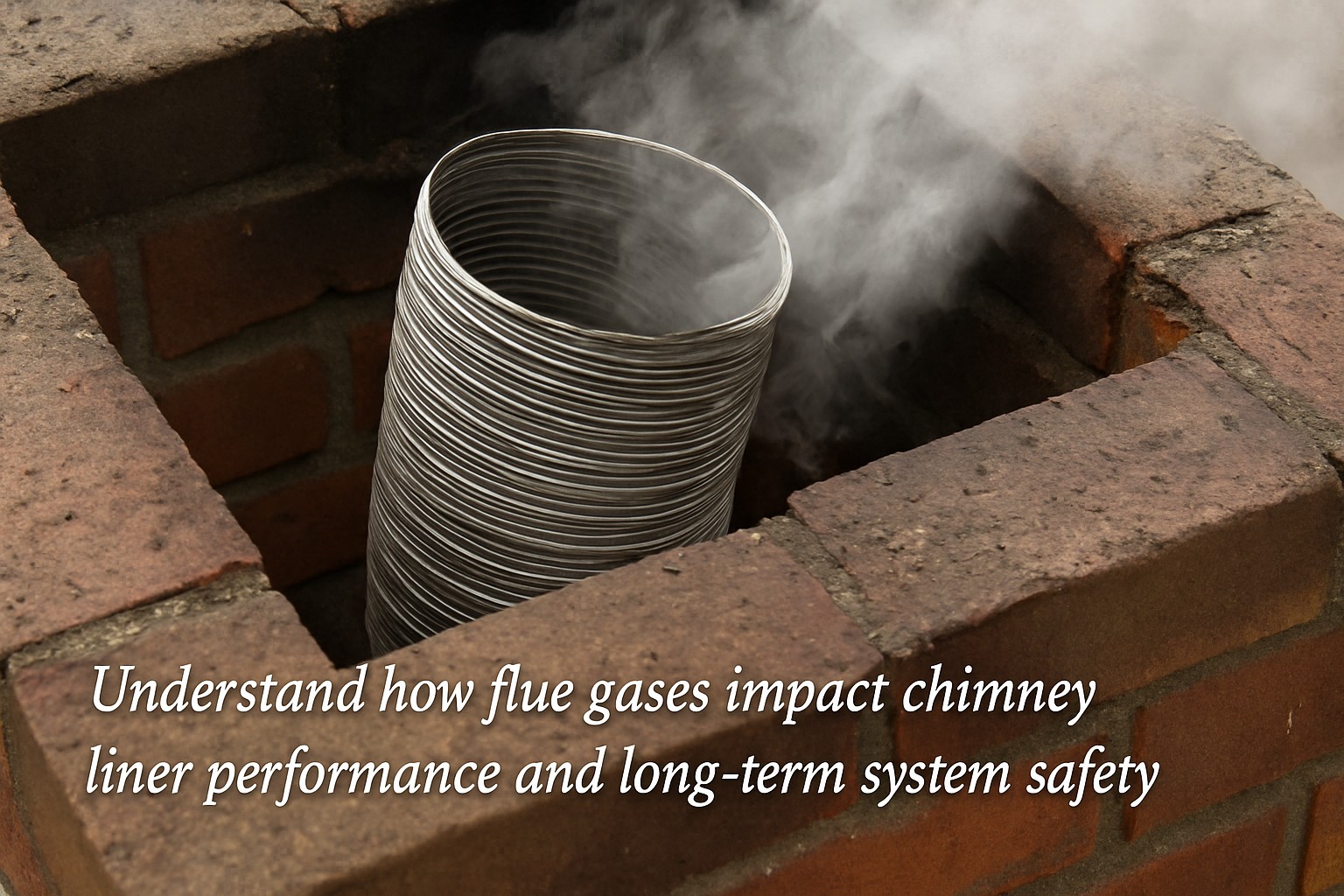How Do Flue Gases Interact with the Chimney Liner in Chandler Systems

If you’ve ever watched smoke drift lazily out of a chimney on a chilly Chandler morning, you might wonder what’s happening inside that tall stack. The journey of flue gases through your fireplace or furnace and up into the sky isn’t just a simple escape. There’s a crucial player making sure this process is safe and efficient: the Chimney Liner. Right from the moment combustion kicks off in your heating system, flue gases zigzag up the chimney, meeting the liner head-on. This interaction shapes how your home stays warm, how safe your air stays, and even how long your chimney will last. Today, let’s take a friendly dive into what really goes on between flue gases and the Chimney Liner in Chandler systems.
Key Features: What Makes a Chimney Liner So Special?
Think of a chimney liner as a hardworking shield that lines the inside of your chimney. It’s not just a tube; it’s your home’s frontline defense against heat, moisture, and the chemical cocktail found in flue gases. Whether your Chandler home has a stainless steel, clay tile, or flexible liner, each one comes with its own perks. A liner keeps those aggressive gases from eating away at your chimney walls or leaking back inside.
Here’s a quick look at what makes these liners tick:
| Chimney Liner Type | Main Advantage | Common Use |
|---|---|---|
| Stainless Steel | Durable and rust-resistant | Gas & wood-burning appliances |
| Clay Tile | Affordable and heat-resistant | Traditional fireplaces |
| Ceramic or Cast-in-Place | Custom fit and good insulation | Older or damaged chimneys |
| Flexible Metal | Easy to install in tricky spaces | Chimney upgrades & repairs |
Each type does the same core job: guiding flue gases safely outside while protecting the chimney structure. But the material and design can change how well it handles things like high heat, acidic residue, or quick temperature swings.
Safety: The Liner-Flue Gas Relationship
When you light up that fireplace or turn on your furnace, all sorts of gases—like carbon monoxide, water vapor, and sulfur compounds—rush upwards. The liner’s job is to make sure these gases don’t seep through cracks or gaps in the chimney and sneak back into your home. If a liner is old or damaged, it could let dangerous fumes slip through, putting your family at risk.
For folks in Chandler, where temperature swings can be sharp, liners also help the chimney handle expansion and contraction. This is especially important if you use your heating system a lot in the winter and let it sit unused in the summer. And here’s a fun fact: the liner even keeps stray sparks from setting fire to the brickwork or wood framing nearby. That’s peace of mind you can’t put a price on!
“A healthy chimney liner is like a silent bodyguard for your home—always there, always on duty, keeping danger at bay.”
Cost: Investing in the Right Chimney Liner
If you’re thinking about upgrading, repairing, or installing a new liner, you might be wondering about the cost. The answer depends a lot on the type of liner you choose, the height and shape of your chimney, and whether you need extra repairs. Stainless steel liners are a bit pricier but last a long time and stand up well to moisture and acid. Clay tiles cost less upfront but can crack over time, especially if your system sees heavy use. Flexible liners are great for older chimneys that aren’t straight.
While the upfront cost might make you pause, remember that a good liner can save you money in the long run. It helps your heating system work more efficiently and prevents expensive repairs from acid or moisture damage. Plus, if you ever sell your home, a newer liner can be a solid bonus for buyers looking for a safe, modern setup.
Emergency Service: When Things Go Wrong
Sometimes, things don’t go as planned. Maybe you notice strange smells, hear odd noises, or spot smoke in places it shouldn’t be. That’s when emergency chimney services step in. In Chandler, quick-response teams can inspect your liner, clear out blockages, and fix cracks or holes fast.
Waiting too long to call for help can let flue gases escape into your living space or cause a chimney fire. That’s why it’s smart to have a trusted local service on speed dial—someone who knows how to check the liner, test for leaks, and get things back to normal safely and quickly.
Frequently Asked Questions
Q. What are signs my chimney liner needs attention?
A. If you see bits of tile or metal in your fireplace, smell odd odors, or notice your fires burn poorly, it’s time for an inspection.
Q. Can I install a chimney liner myself?
A. It’s best to let a professional do it. Liners need to be the right size and material to work safely, and mistakes can be risky.
Q. How often should I get my chimney liner checked?
A. Once a year is a good rule. Regular checks catch problems early, before they turn into big repairs or safety hazards.
Q. Do all chimneys need a liner?
A. Modern safety codes require liners in almost every case. Older homes sometimes have unlined chimneys, but those should be upgraded for safety.
Conclusion: The Unsung Guardian—Chimney Liner
Flue gases might seem harmless as they drift out of your chimney, but they pack a punch when it comes to wear, tear, and safety risks. The Chimney Liner is the silent hero, working behind the scenes to funnel those gases safely outside and keep your home protected. Whether you’re enjoying a crackling fire or warming up with your furnace on a chilly Chandler night, take a moment to appreciate what’s happening inside that chimney. A healthy liner isn’t just a piece of hardware—it’s peace of mind for you and your family.
Read More: Chimney Sweep Chandler


